Office Relocation Letter Samples
-
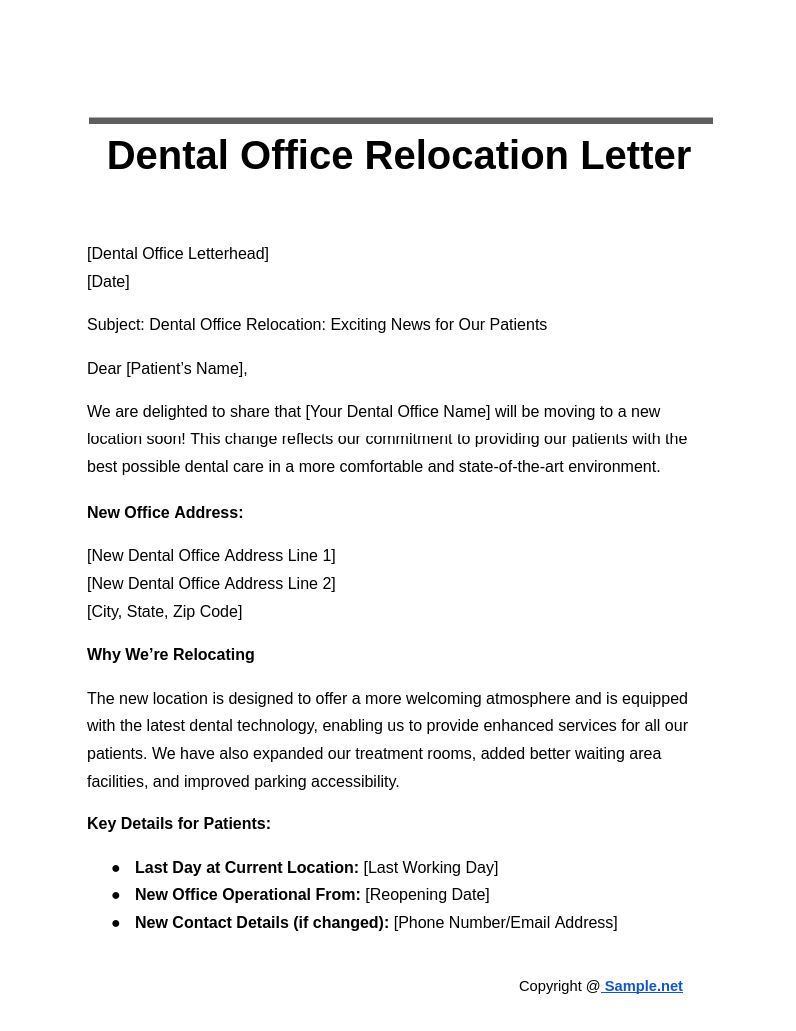
Dental Office Relocation Letter
download now -

Office Relocation Letter to Customers
download now -
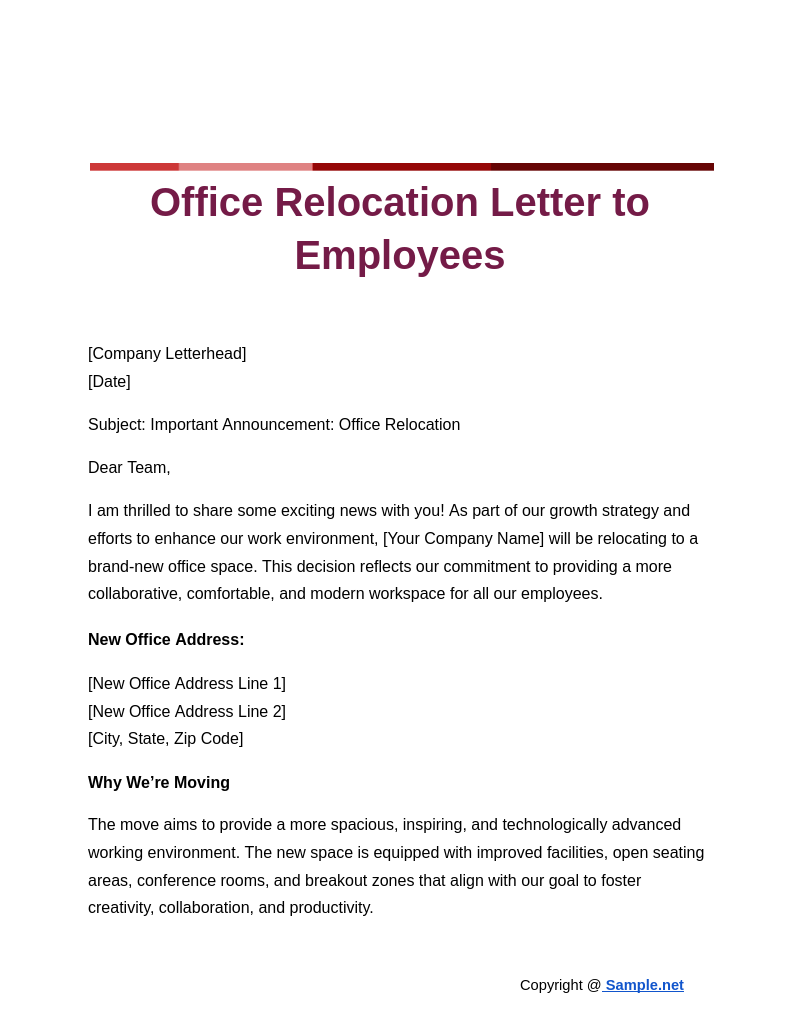
Office Relocation Letter to Employees
download now -
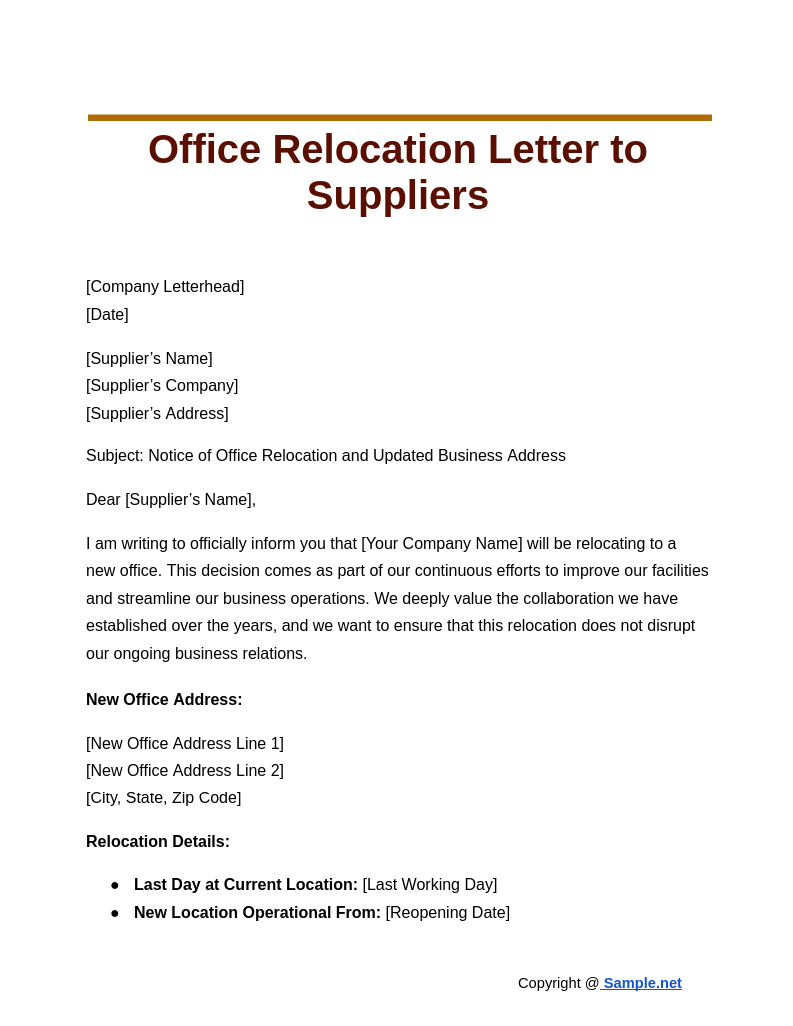
Office Relocation Letter to Suppliers
download now -
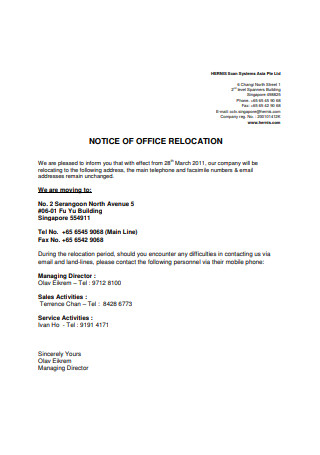
Sample Office Relocation of Notice Letter
download now -
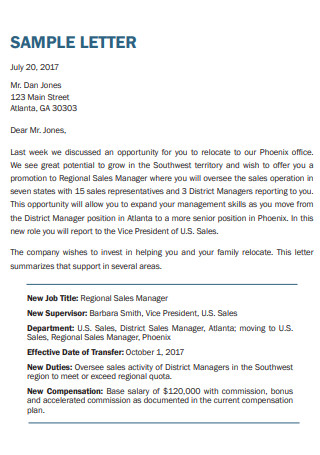
Sample Office Relocation Cover Letter Template
download now -
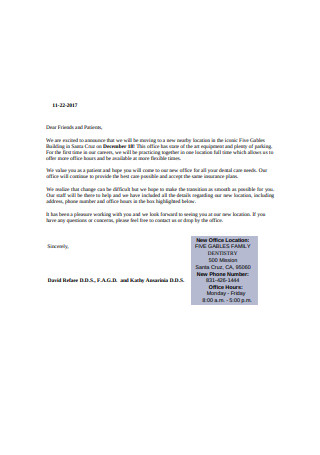
Office Moving Relocation Letter
download now -

Sample Office Relocation Letter
download now -
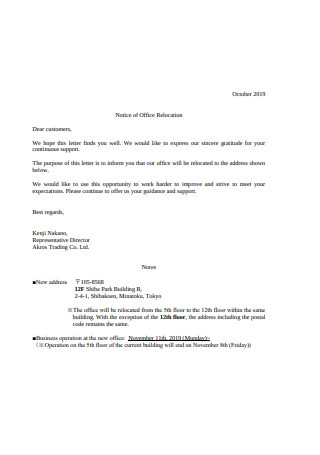
Sample Notice of Office Relocation Letter
download now -
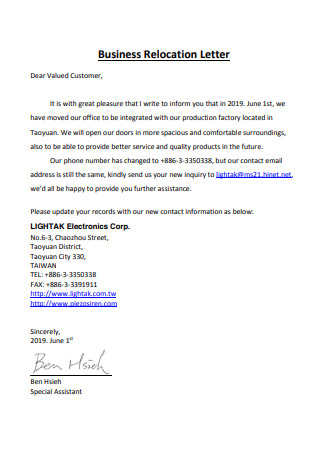
Office Business Relocation Letter
download now -

Office Employment Relocation Letter
download now -
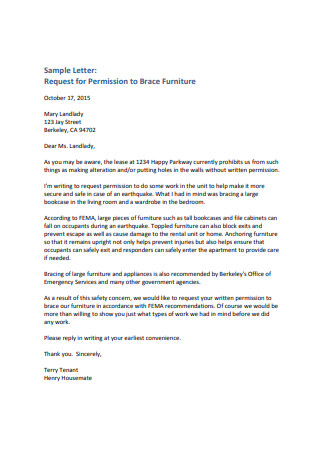
Sample Request for Permission Office Relocation Letter
download now -
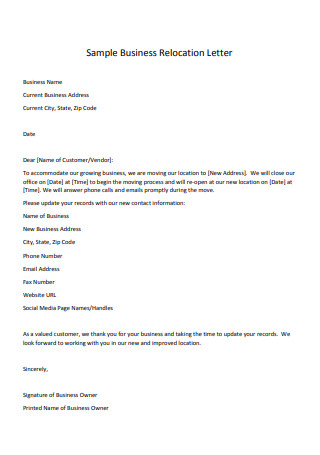
Sample Business Office Relocation Letter
download now -
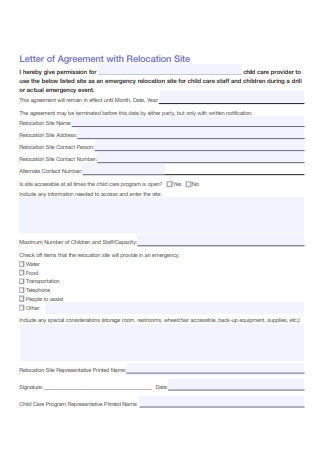
Letter of Agreement with Relocation Site
download now -
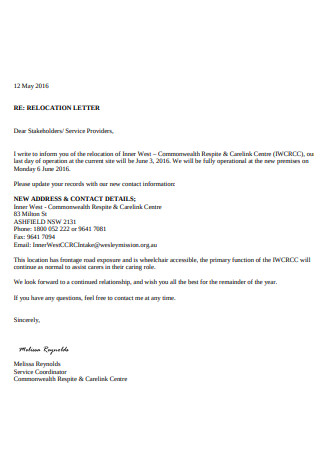
Office Stakeholders Stakeholder Relocation Letter
download now -
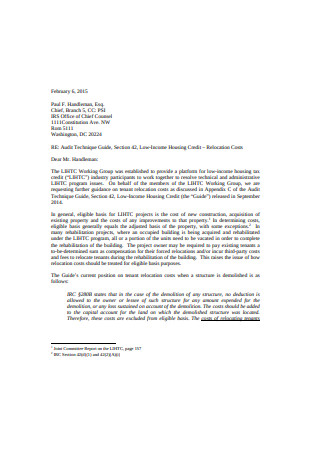
Company Office Relocation Letter
download now -
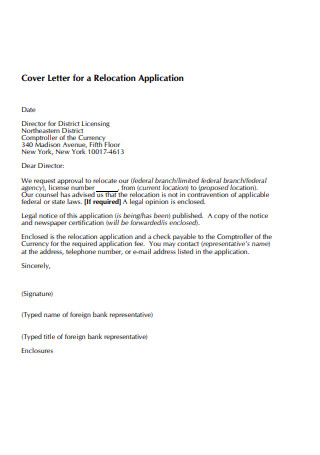
Cover Letter for a Relocation Application
download now -
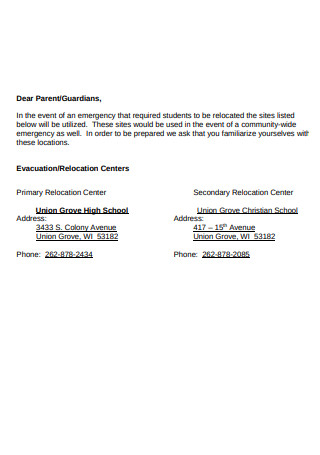
Joint School Office Relocation letter
download now -
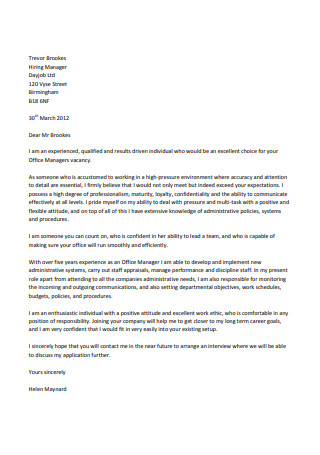
Office manager Relocation Letter
download now -

Basic Office Relocation Letter
download now -
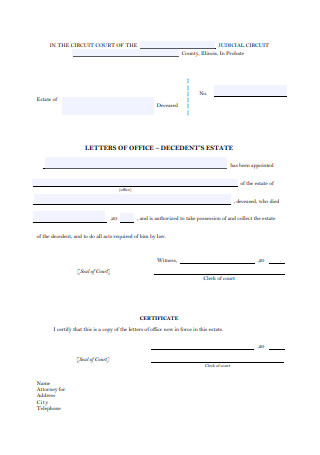
Formal Office Relocation Letter
download now -
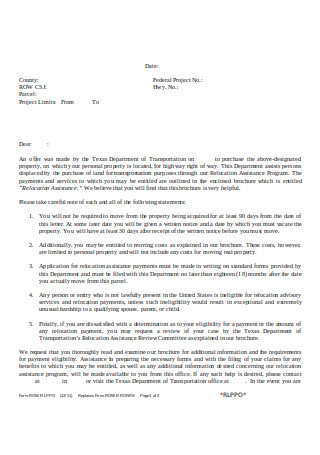
Office Relocation Letter Format
download now
FREE Office Relocation Letter s to Download
Office Relocation Letter Format
Office Relocation Letter Samples
What Are Office Relocation Letters?
What Are the Elements of an Excellent Office Relocation Letter?
How to Create an Office Relocation Letter?
FAQs
How much does a relocation cost?
How do you announce an office relocation?
What are the types of office relocation letters?
How does an office relocation affect employees?
What information is mandatory in an office relocation letter?
How can the letter help minimize disruptions during the move?
Is it necessary to send a separate letter to suppliers?
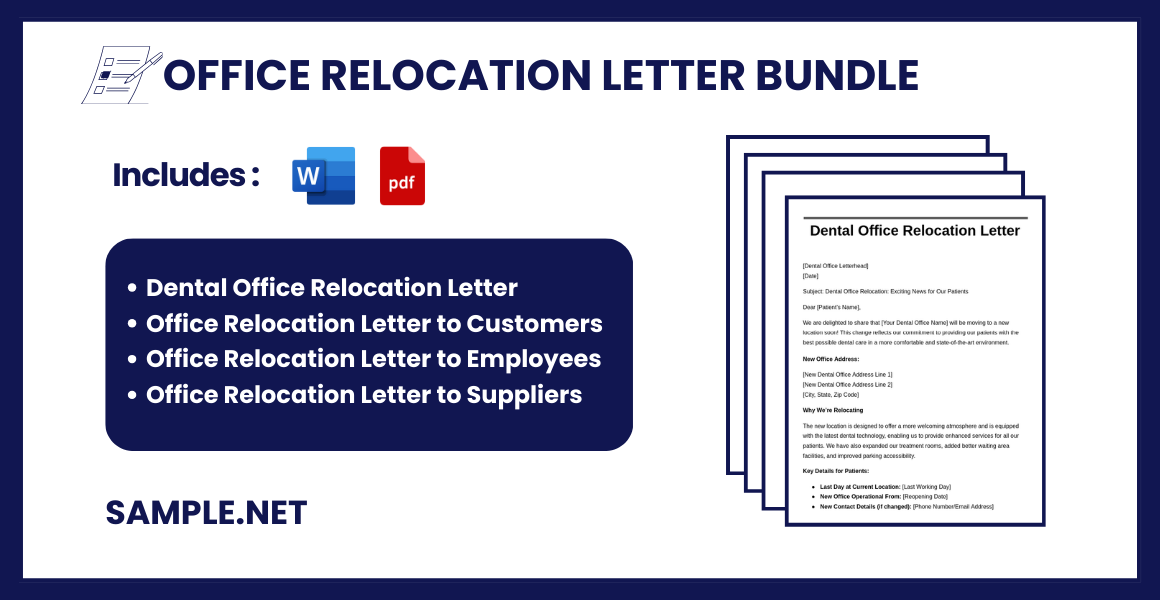
Download Office Relocation Letter Bundle
Office Relocation Letter Format
[Your Company Letterhead]
[Date]
[Recipient Name]
[Recipient Title]
[Recipient Company Name]
[Recipient Address]
Subject: Notice of Office Relocation
Dear [Recipient’s Name],
We are pleased to announce that [Your Company Name] will be relocating to a new office space to accommodate our continued growth and better serve our clients. The relocation will be effective from [Relocation Date].
New Office Address:
[New Office Address Line 1]
[New Office Address Line 2]
[City, State, Zip Code]
Our contact numbers and email addresses will remain the same. Please update your records accordingly to ensure seamless communication.
Key Details:
- Moving Date: [Moving Date]
- New Office Opens on: [Office Reopening Date]
- Operating Hours: [New Operating Hours, if any]
- Emergency Contact Number: [Emergency Contact, if needed]
We appreciate your cooperation and understanding during this transition period. Should you have any questions or require further information, please feel free to contact us at [Your Contact Information].
Thank you for your continued partnership and support.
Sincerely,
[Your Name]
[Your Position]
[Your Contact Information]
What Are Office Relocation Letters?
Office relocation letters are formal letters that entail an upcoming relocation of a company’s office. Thanks to this relocation announcement in the form of a letter, any type of business, whether small or big, can bring awareness to the staff about the new address changes of an organization’s office. And such letters are often given a few weeks early before the actual relocation so that the target audience can prepare for such measures ahead. Thus, everyone is updated about the decision and whatever is happening in the relocation from now on. You can also see more on Compensation And Benefit Forms.
What Are the Elements of an Excellent Office Relocation Letter?
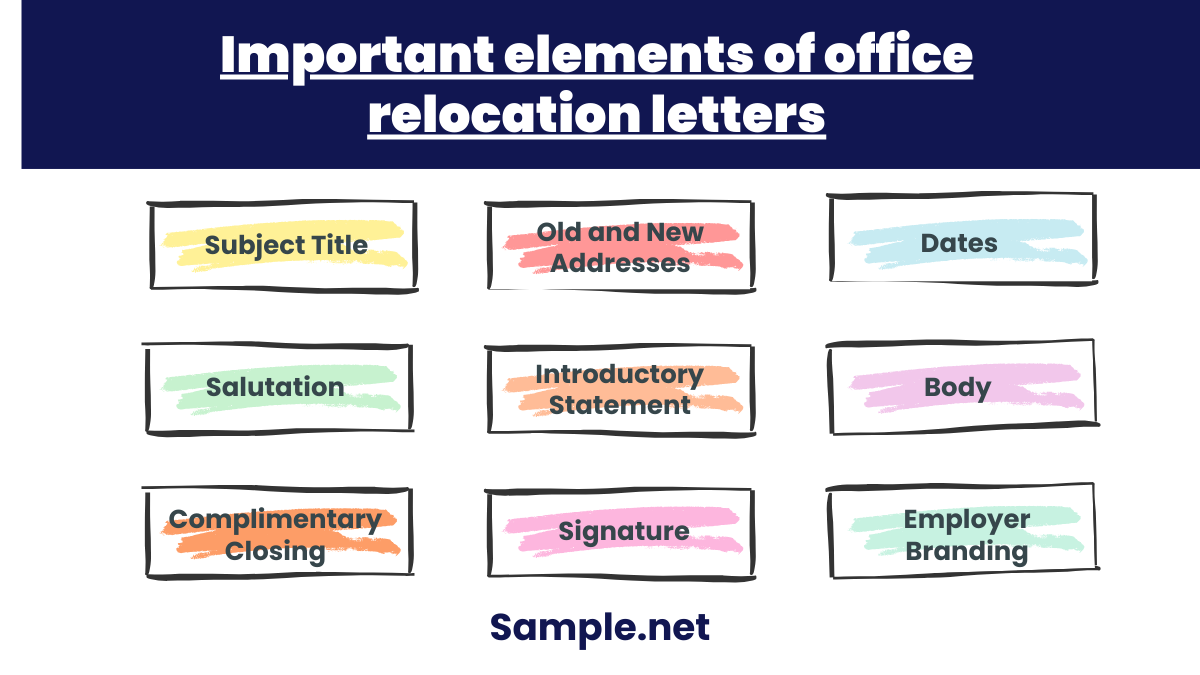
Just like most HR forms in the workplace, there are standard components that make up a proper office relocation letter. And each element being put together is responsible for creating an informative and complete office relocation document. So without further ado, here are the important elements of office relocation letters:
How to Create an Office Relocation Letter?
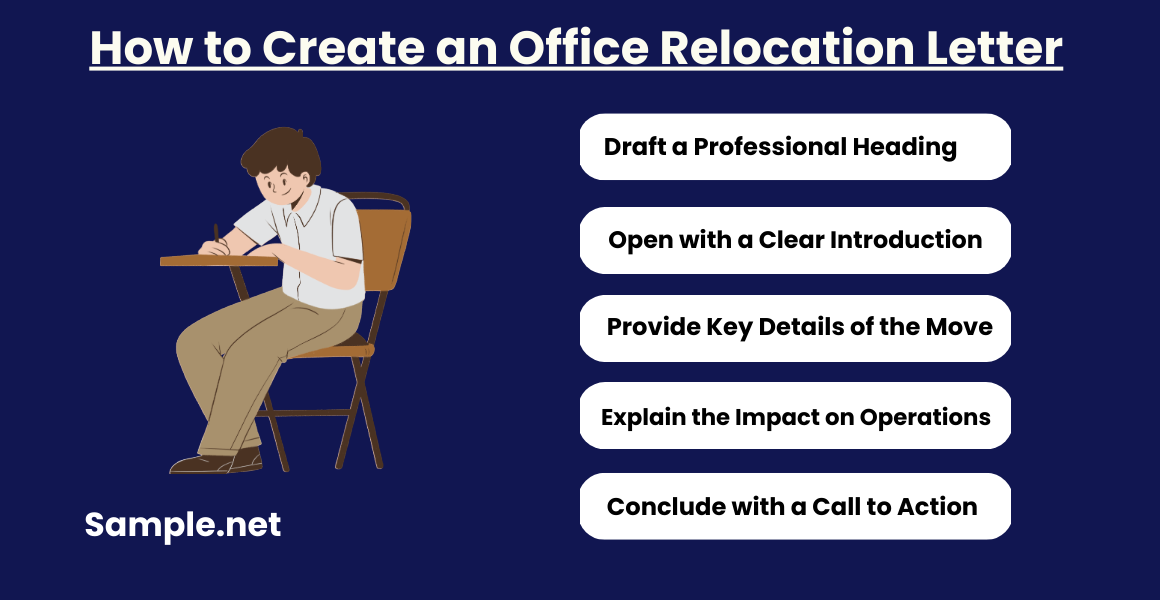
1. Draft a Professional Heading
Start by including your company’s letterhead at the top of the document. This should contain the logo, company name, current address, and the date of the letter. Below this, add the recipient’s name and address to specify who the letter is directed to. Use a clear subject line, such as “Office Relocation Announcement,” to immediately convey the purpose of the letter.
2. Open with a Clear Introduction
Begin the letter with a warm greeting and proceed to state the purpose of the communication. Clearly inform the recipient about the decision to relocate the office, and briefly mention the reason for the move if necessary. Maintain a positive and professional tone to ensure a good relationship is upheld. You can also see more on Offer Letter Samples.
3. Provide Key Details of the Move
Include the new office address, the scheduled date of the relocation, and any updates to contact numbers or email addresses. Be specific about the changes and emphasize the effective date when the new location becomes operational. Make the information clear and concise, ensuring that it is easy for the recipient to understand and take note of the changes.
4. Explain the Impact on Operations
Describe any potential disruptions or temporary changes in operations due to the move, such as delays in services or alternative communication channels during the transition. Assure stakeholders that measures are in place to minimize disruptions and maintain service quality. Mention any special arrangements that have been made to ensure continuity during the move.
5. Conclude with a Call to Action
Close the letter by encouraging the recipient to update their records with the new office details. Invite them to reach out if they have any questions or need further assistance regarding the relocation. Thank them for their continued support and understanding during this transition, and end the letter with a formal sign-off, your name, title, and updated contact details. You can also see more on Work Letters.
FAQs
How much does a relocation cost?
The average relocation package for transferee renters is about $21,327–$24,913 and the average relocation package for transferee homeowners is around $61,622–$79,429.
How do you announce an office relocation?
You can follow this paragraph in announcing an office relocation in your relocation letter or email: “It is our greatest pleasure to announce that we, (name of your business), are moving to a new office location. The new office is located at (new office address). We will move on (actual relocation date) and start working at our new office on (operations resume date).”
What are the types of office relocation letters?
There are three main types of office relocation letters and you can easily distinguish them according to the audience of the letter. These are the office relocation letters to employees, office relocation letters to customers, and the general office relocation announcement letter.
How does an office relocation affect employees?
According to Small Business Trends, 68% of employees list receive a positive effect from office relocations. That is likely the case because relocations are meant to develop or enhance working conditions rather than make things worse.
What information is mandatory in an office relocation letter?
The letter must include the new office address, relocation date, and any changes in contact information. It should also detail how the move impacts business operations. Ensure clarity to avoid confusion and maintain trust.
How can the letter help minimize disruptions during the move?
By providing clear information about changes and interim arrangements, the letter prepares stakeholders for potential adjustments. It also sets expectations for service continuity. Well-structured communication helps avoid confusion and maintains relationships.
Is it necessary to send a separate letter to suppliers?
While a general relocation letter covers all stakeholders, suppliers might need more specific details. Include instructions for delivery changes and new logistics arrangements to ensure seamless operations during the transition. You can also see more on Confirmation Letters.
